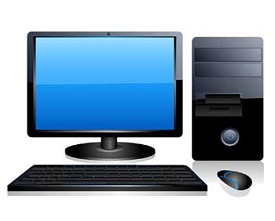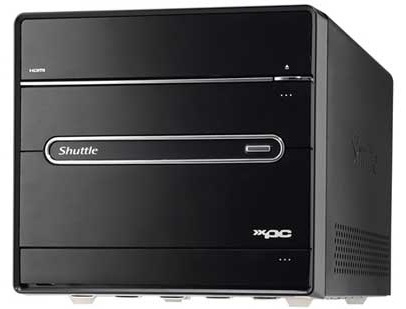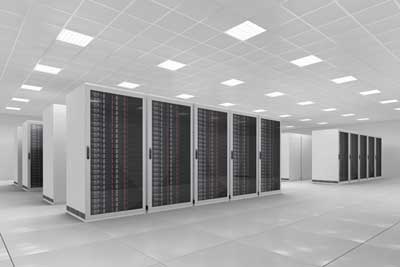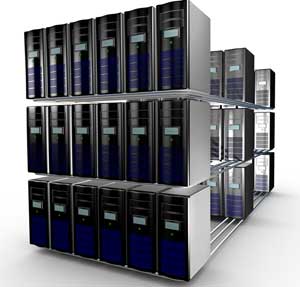HISTORY OF COMPUTER
The abacus (plural abaci or abacuses), also called a counting frame, is a calculating tool that was in use centuries before the adoption of the written modern numeral system and is still widely used by merchants, traders and clerks in Asia, Africa, and elsewhere.
A device that processes input and generates output.
an electronic device for storing and processing data, typically in binary form, according to instructions given to it in a variable program.
a programmable electronic device designed to accept data, perform prescribed mathematical and logical operations at high speed, and display the results of these operations. Mainframes, desktop and laptop computers, tablets, and smartphones are some of the different types of computers.
Secound 3000 BC - AbacusThe abacus (plural abaci or abacuses), also called a counting frame, is a calculating tool that was in use centuries before the adoption of the written modern numeral system and is still widely used by merchants, traders and clerks in Asia, Africa, and elsewhere.
Third 1752 - Jacquard loom
The Jacquard loom is a mechanical loom, invented by Joseph Marie Jacquard, first demonstrated in 1801, that simplifies the process of manufacturing textiles with such complex patterns as brocade, damask and matelasse. The loom was controlled by a "chain of cards", a number of punched cards, laced together into a continuous sequence. Multiple rows of holes were punched on each card, with one complete card corresponding to one row of the design. Several such paper cards, generally white in color, can be seen in the images below. Chains, like the much later paper tape, allowed sequences of any length to be constructed, not limited by the size of a card.
Fourth
1792 - Difference engine
A difference engine is an automatic mechanical calculator designed to tabulate polynomial functions. The name derives from the method of divided differences, a way to interpolate or tabulate functions by using a small set of polynomial coefficients. Most mathematical functions commonly used by engineers, scientists and navigators, including logarithmic and trigonometric functions, can be approximated by polynomials, so a difference engine can compute many useful tables of numbers.
Fifth
1930 - Vacuum tube
In electronics, vacuum tube, electron tube (in North America), tube, or valve (in British English) is a device that controls electric current through a vacuum in a sealed container. Vacuum tubes mostly rely on thermionic emission of electrons from a hot filament or a cathode heated by the filament. This type is called a thermionic tube or thermionic valve. A phototube, however, achieves electron emission through the photoelectric effect. Not all electron tubes contain vacuum: gas-filled tubes are devices that rely on the properties of a discharge through an ionized gas.
• First Generation Electronic Computers used Vacuum Tubes
• Vacuum tubes are glass tubes with circuits inside.
• Vacuum tubes have no air inside of them, which protects the circuitry.
1976 - Apple I
The original Apple Computer, also known retroactively as the Apple I, or Apple-1, was released by the Apple Computer Company (now Apple Inc.) in 1976. They were designed and hand-built by Steve Wozniak. Wozniak's friend Steve Jobs had the idea of selling the computer. The Apple I was Apple's first product, and to finance its creation, Jobs sold his only means of transportation, a VW Microbus, and Wozniak sold his HP-65 calculator for $500. It was demonstrated in July 1976 at the Homebrew Computer Club in Palo Alto, California.
Release date April 11, 1976
Introductory price $ 666.66
Discontinued September 30, 1977
CPU MOS 6502 @ 1 MHz
Memory 4 KB standard
Expandable to 8 KB or 48 KB using expansion cards
Graphics 40x24 characters, hardware-implemented scrolling
Successor Apple II
1975 - IBM 5100
The IBM 5100 Portable Computer was a portable computer introduced in September 1975, six years before the IBM PC. It was the evolution of a prototype called the SCAMP (Special Computer APL Machine Portable) that was developed at the IBM Palo Alto Scientific Center in 1973. In January 1978 IBM announced the IBM 5110, its larger cousin, and in February 1980 IBM announced the IBM 5120. The 5100 was withdrawn in March 1982.
History of Asus
ASUSTeK Computer Inc. usually referred to as ASUS, is a Taiwanese multinational computer hardware and electronics company headquartered in Beitou District, Taipei, Taiwan. Its products include desktops, laptops, netbooks, LED/LCD panels, mobile phones, networking equipment, monitors, motherboards, graphics cards, optical storage, multimedia products, servers, workstations, and tablet PCs. The company's slogan/tagline was "Inspiring Innovation. Persistent Perfection." and is currently "In Search of Incredible."
ASUS was founded in Taipei in 1989 by T.H. Tung, Ted Hsu, Wayne Hsieh and M.T. Liao,[10] all four having previously worked at Acer as computer engineers.
In September 2005 ASUS released the first PhysX accelerator card.
On 9 March 2006 ASUS was confirmed as one of the manufacturers of the first Microsoft Origami models, together with Samsung and Founder Technology.
On 9 December 2008, the Open Handset Alliance announced that ASUS had become one of 14 new members of the organization. These "new members will either deploy compatible Android devices, contribute significant code to the Android Open Source Project, or support the ecosystem through products and services that will accelerate the availability of Android-based devices."
On 1 June 2010, ASUS spun off Pegatron Corp. In October 2010, ASUS and Garmin announced that they would be ending their smartphone partnership as a result of Garmin deciding to exit the product category. The two companies had produced six Garmin-ASUS branded smartphones over the prior two years.
In December 2010, ASUS launched the world's thinnest notebook, the ASUS U36, with Intel processor voltage standard (not low voltage) Intel core i3 or i5 with a thickness of only 19 mm.
In January 2013, ASUS officially ended production of its Eee PC series due to declining sales caused by consumers increasingly switching to tablets and Ultrabooks.

A PC can be defined as a small, relatively inexpensive computer designed for an individual user. PCs are based on the microprocessor technology that enables manufacturers to put an entire CPU on one chip. Businesses use personal computers for word processing, accounting, desktop publishing, and for running spreadsheet and database management applications. At home, the most popular use for personal computers is playing games and surfing the Internet.
Although personal computers are designed as single-user systems, these systems are normally linked together to form a network. In terms of power, now-a-days high-end models of the Macintosh and PC offer the same computing power and graphics capability as low-end workstations by Sun Microsystems, Hewlett-Packard, and Dell.

Workstation is a computer used for engineering applications (CAD/CAM), desktop publishing, software development, and other such types of applications which require a moderate amount of computing power and relatively high quality graphics capabilities.
Workstations generally come with a large, high-resolution graphics screen, large amount of RAM, inbuilt network support, and a graphical user interface. Most workstations also have mass storage device such as a disk drive, but a special type of workstation, called diskless workstation, comes without a disk drive.
Common operating systems for workstations are UNIX and Windows NT. Like PC, workstations are also single-user computers like PC but are typically linked together to form a local-area network, although they can also be used as stand-alone systems.

It is a midsize multi-processing system capable of supporting up to 250 users simultaneously.

Mainframe is very large in size and is an expensive computer capable of supporting hundreds or even thousands of users simultaneously. Mainframe executes many programs concurrently and supports many simultaneous execution of programs.

Supercomputers are one of the fastest computers currently available. Supercomputers are very expensive and are employed for specialized applications that require immense amount of mathematical calculations (number crunching).
For example, weather forecasting, scientific simulations, (animated) graphics, fluid dynamic calculations, nuclear energy research, electronic design, and analysis of geological data (e.g. in petrochemical prospecting).
Types of Computers
Computers can be broadly classified by their speed and computing power.
PC (Personal Computer)

A PC can be defined as a small, relatively inexpensive computer designed for an individual user. PCs are based on the microprocessor technology that enables manufacturers to put an entire CPU on one chip. Businesses use personal computers for word processing, accounting, desktop publishing, and for running spreadsheet and database management applications. At home, the most popular use for personal computers is playing games and surfing the Internet.
Although personal computers are designed as single-user systems, these systems are normally linked together to form a network. In terms of power, now-a-days high-end models of the Macintosh and PC offer the same computing power and graphics capability as low-end workstations by Sun Microsystems, Hewlett-Packard, and Dell.
Workstation

Workstation is a computer used for engineering applications (CAD/CAM), desktop publishing, software development, and other such types of applications which require a moderate amount of computing power and relatively high quality graphics capabilities.
Workstations generally come with a large, high-resolution graphics screen, large amount of RAM, inbuilt network support, and a graphical user interface. Most workstations also have mass storage device such as a disk drive, but a special type of workstation, called diskless workstation, comes without a disk drive.
Common operating systems for workstations are UNIX and Windows NT. Like PC, workstations are also single-user computers like PC but are typically linked together to form a local-area network, although they can also be used as stand-alone systems.
Minicomputer

It is a midsize multi-processing system capable of supporting up to 250 users simultaneously.
Mainframe

Mainframe is very large in size and is an expensive computer capable of supporting hundreds or even thousands of users simultaneously. Mainframe executes many programs concurrently and supports many simultaneous execution of programs.
Supercomputer

Supercomputers are one of the fastest computers currently available. Supercomputers are very expensive and are employed for specialized applications that require immense amount of mathematical calculations (number crunching).
For example, weather forecasting, scientific simulations, (animated) graphics, fluid dynamic calculations, nuclear energy research, electronic design, and analysis of geological data (e.g. in petrochemical prospecting).
Thanks for wathing
Made by lucky patel









Very nice
ReplyDelete